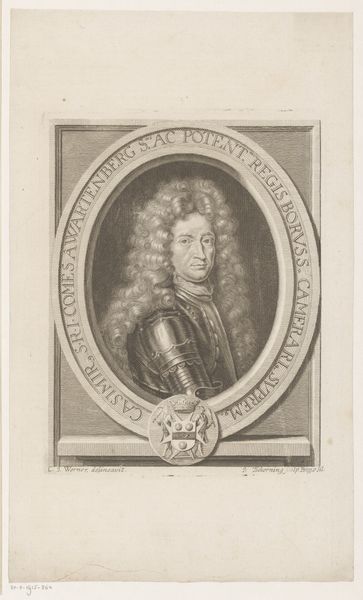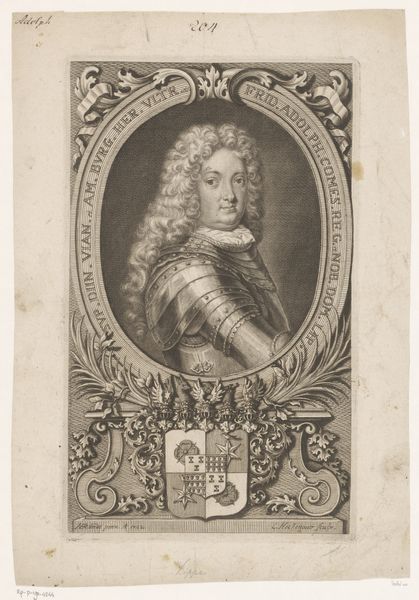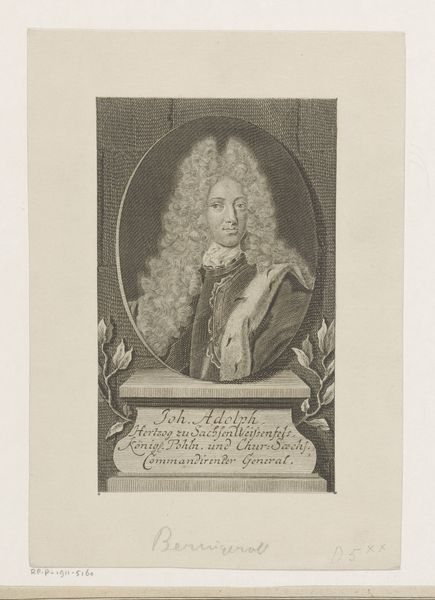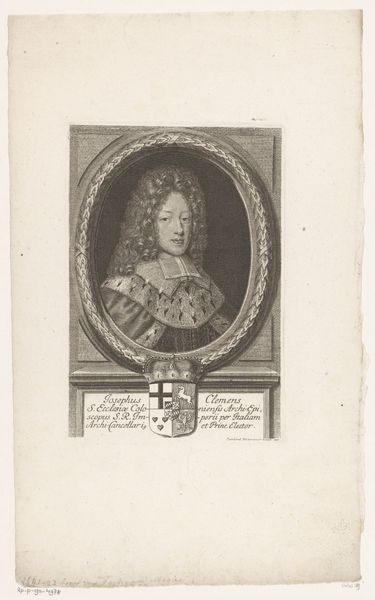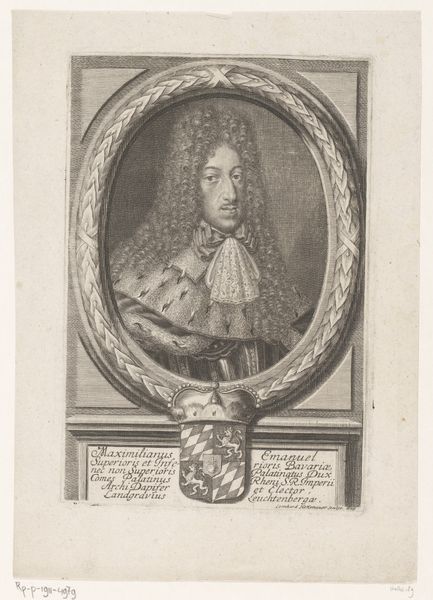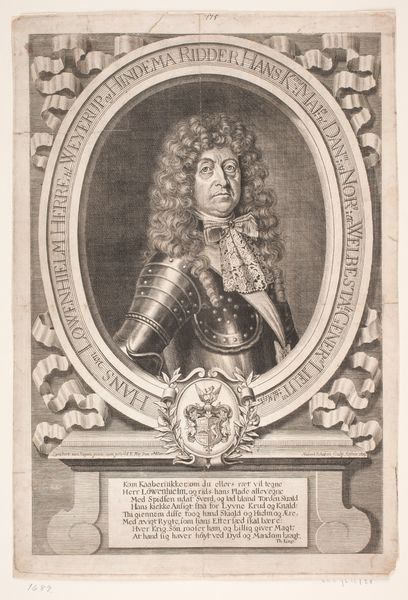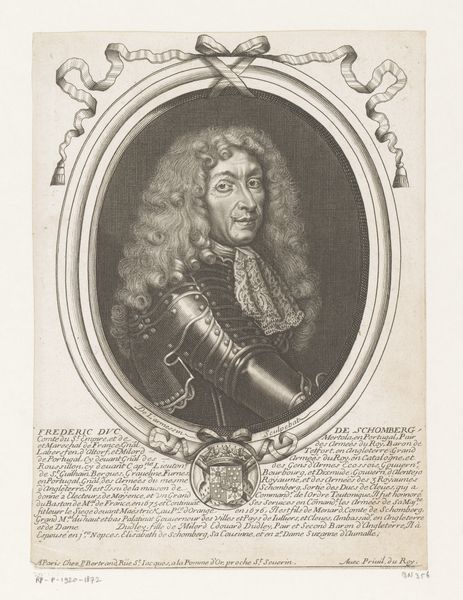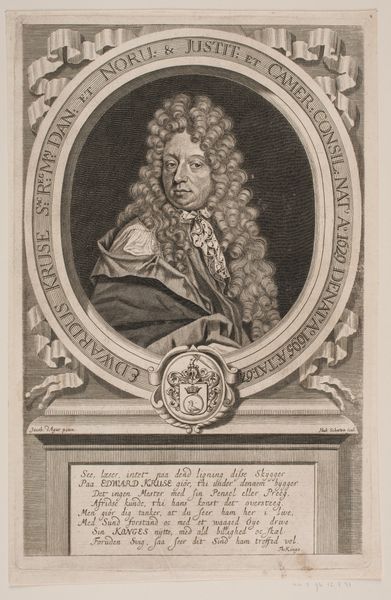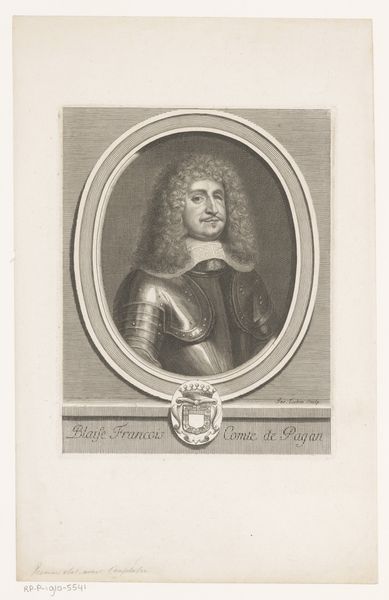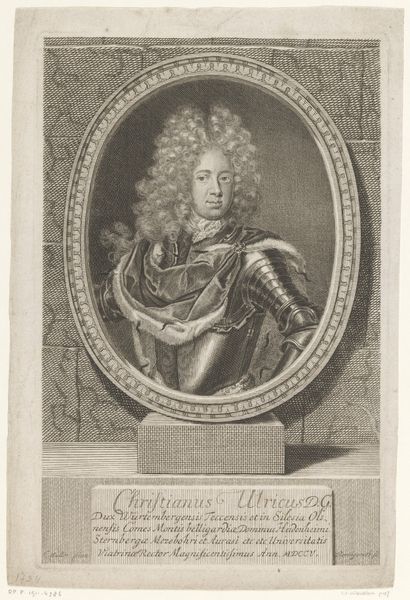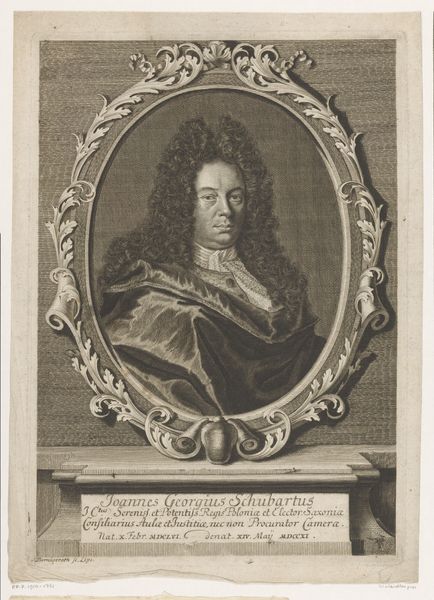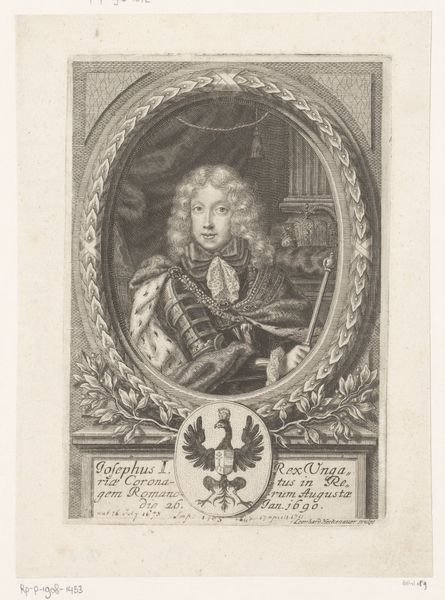
engraving
#
portrait
#
baroque
#
history-painting
#
engraving
Dimensions: height 196 mm, width 130 mm
Copyright: Rijks Museum: Open Domain
Leonhard Heckenauer made this portrait of Frederick I, King of Prussia, using etching, a printmaking process that democratized image production in the 17th century. Etching involves coating a metal plate with a waxy, acid-resistant substance, then scratching an image into that coating. When the plate is dipped in acid, the exposed lines are eaten away, creating grooves. Ink is then applied to these grooves, and the plate is pressed onto paper, transferring the image. The fine lines and detailed textures visible in this portrait—from the King’s elaborate wig to the heraldic crest—are characteristic of etching. Unlike engraving, which requires immense pressure to cut lines directly into the metal, etching allows for a more fluid, expressive line, mirroring the hand of the artist. Consider, too, the social context of printmaking. Etchings like this one made art more accessible, circulating images and ideas widely, and shaping public perceptions of power. By understanding the material process, we gain insight into the artwork's cultural impact.
Comments
No comments
Be the first to comment and join the conversation on the ultimate creative platform.
